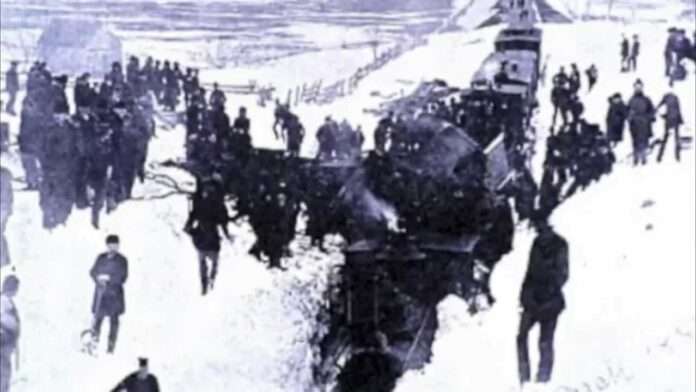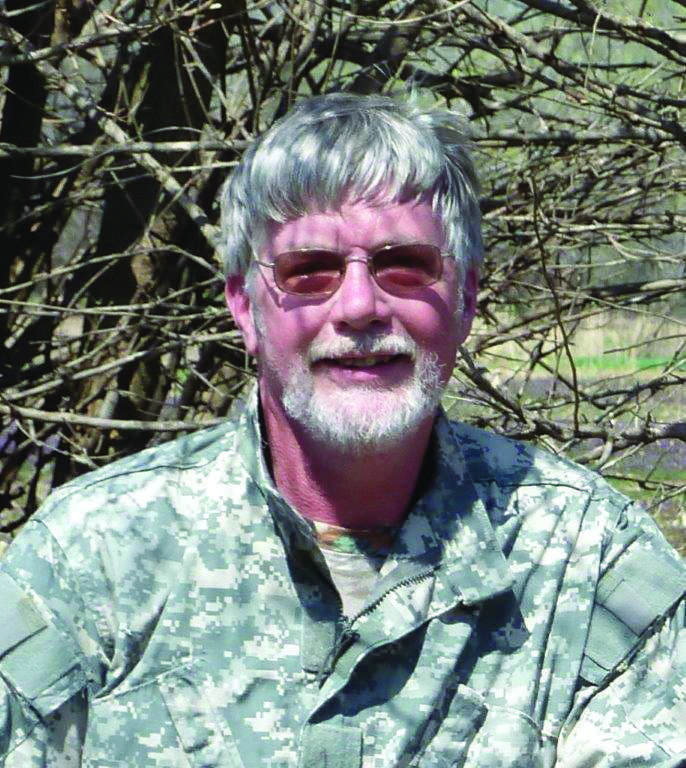A couple of weeks ago, I speculated in my column about how the pioneers in the 1880s were probably very happy for the telegraph because one big benefit was advanced notice of bad weather — hours, or perhaps days — ahead of the storms to towns and cities up and down the telegraph lines. Getting weather information to individuals and families isolated on the prairies was still to come.
After reading my column, Elmer from Colorado called me to discuss the telegraph’s use in pioneer day weather forecasting. He said every telegraph station had a barometer and changing barometric pressures were telegraphed regularly to all stations. The rule of thumb was rapidly rising or falling barometric pressures forecast major weather changes.
That weather information was helpful, but certainly not infallible. It sadly proved its infallibility on January 12, 1888, in Nebraska. It was a sunny day on the Nebraska plains and school children were scattered about everywhere in their one-room schoolhouses.
The telegraphers at their stations noted a precipitous drop in the barometric pressure, so sharp and deep that they thought it couldn’t be correct. So, the information was largely dismissed. But, soon, the weather proved they should have paid attention.
School children and teachers saw the black storm charging in from the west. Within minutes, it started snowing furiously in a full-blown howling blizzard, Some teachers opted to let their students try to make it to their homes. Others, more wisely, opted to hunker down in the schoolhouses with their charges.
The blizzard roared through the night. Some accounts say the temperature fell nearly 100 degrees in 24 hours. It killed livestock, adults and children, most of them caught in the maelstrom between school and home.
In some places, though, caution prevailed. Schoolteacher Seymour Dopp in Pawnee City, Nebraska kept his 17 students at school when the storm began at 2 p.m. They stayed overnight, burning stockpiled wood to keep warm. The next day, parents made their way over five-foot snow drifts to rescue their children.
In South Dakota two men rescued the children in a schoolhouse by tying a rope from the school to the nearest shelter to lead them to safety. Minnie Freeman, a teacher in Nebraska, successfully led her children to shelter after the storm tore the roof off of her one-room schoolhouse.
In other cases, though, people were less lucky. Teacher Loie Royce tried to lead three children to the safety of her home, less than 90 yards from their school in Plainfield, Nebraska. They became lost, and the children died of hypothermia. Royce lost her feet to frostbite. The storm is still considered one of the worst blizzards in the history of the area.
***
My friend Elmer said a book was written about the awful tragedy. Its name? “The Children’s Blizzard of 1888.” The author? David A. Laskin. Here’s what the internet says about the book: “The book is a gripping story of an epic prairie snowstorm that killed hundreds of newly arrived settlers and cast a shadow on the promise of the American frontier. January 12, 1888, began as an unseasonably warm morning across Nebraska, the Dakotas, and Minnesota, the weather so mild that children walked to school without coats and gloves. But that afternoon, without warning, the atmosphere suddenly, violently changed. One moment the air was calm; the next the sky exploded in a raging chaos of horizontal snow and hurricane-force winds.
“Temperatures plunged as an unprecedented cold front ripped through the center of the continent. By Friday morning, January 13, some 500 people lay dead on the drifted prairie, many of them children who had perished on their way home from country schools. In a few terrifying hours, the hopes of the pioneers had been blasted by the bitter realities of their harsh environment. Recent immigrants from Germany, Norway, Denmark, and the Ukraine learned that their free homestead was not a paradise but a hard, unforgiving place governed by natural forces they neither understood, nor controlled.
“The blizzard of January 12, 1888, is still remembered on the prairie. Children fled that day while their teachers screamed into the relentless roar. Husbands staggered into the blinding wind in search of wives. Fathers collapsed while trying to drag their children to safety. In telling the story of this meteorological catastrophe, the deadliest blizzard ever to hit the prairie states, David Laskin has produced a masterful portrait of a tragic crucible in the settlement of the American heartland.”
***
After reading that, I’m more thankful than I thought to have weather forecasts at my fingertips at all times.
***
Well, yesterday wuz V.D. for me. No, not that kind of VD. Shame on you for even thinking that. I mean Vaccine Day. I got my first coronavirus shot — the Moderna version — at the Chase County Health Clinic. So far, getting the vaccination was uneventful — just a little sore spot at the vaccination site. So, I’ll keep hoping for the best and hope that Nevah’s name pops up on the vaccine list soon. I’m slated for my booster shot in a month.
***
I’ve lived long enuf to see what goes around eventually comes around. The most recent “slow come back around” is “regenerative agriculture.” Heck, 70 years ago my old pappy, Czar E. Yield, and all his neighbors practiced regenerative or “green” agriculture.
They planted cover crops, tilled under green manure, and animal manure, and were acutely aware of the soil’s biological health. They had diversification on their farms.
Then came decades of scientific herbicides, fertilizers, and monocultures. And, the soils slowly died and eroded away. Gradually, regenerative agriculture re-emerged, with the addition of no-till and rotational grazing. It’s a good thing.
***
My words of wisdom for the week. “ Ag science is cyclical.” Have a good ‘un.





